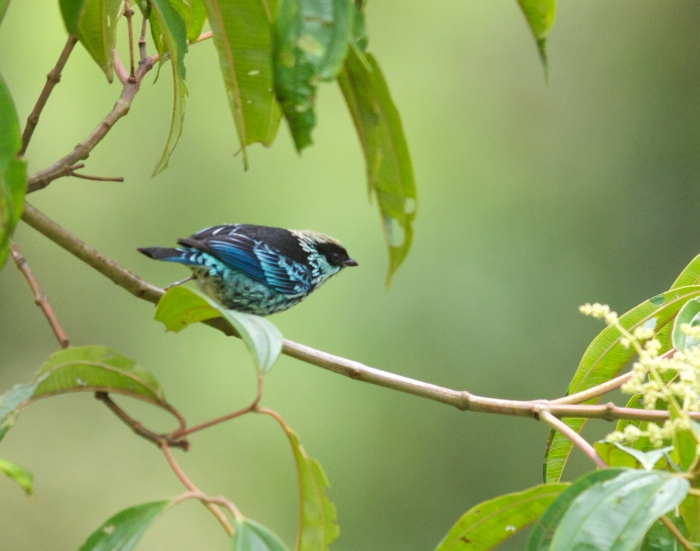Return of Bird of the Week: Beryl-spangled Tanager
If WC has counted correctly, we’ve featured 25 weeks of Tanagers. And while we’re a long ways from exhausting tanagers – we haven’t touched on Mountain Tanagers yet, or tanagers that aren’t called “tanagers” – WC will move to a different family of birds next week. But let’s close out tanagers with a spang(le), specifically with the spectacular Beryl-spangled Tanager.
WC’s first sighting of the species was pretty unusual. We were walking along a grassy river corridor at about 2,000 meters on the east slope of the Andes in Ecuador, just below Guango Lodge. There was a commotion in a tree to the left of us and two fighting birds tumbled out, falling to the ground in front of us. It was two male Beryl-spangled Tanagers, so obsessed with fighting that they ignored the big humans. In fact, they both got picked up and held in the hand. And when, in the hand, they were moved close to each other, they tried to fight again.
There’s probably a lesson about testosterone in there.

Beryl-spangled Tanager Male, East Slope of the Andes, Ecuador (Photo by Mrs. WC)
There are four subspecies of Beryl-spangled. This is Tangara nigroviridis cyanescens, found mostly fom Venezuela to Ecuador.

Beryl-spangled Tanager, Andes, Peru
This is the Peruvian subspecies, Tangara nigroviridis berlepschi, which is slightly different, with a more extensive gold-yellow crown. The species has a wide distribution, but across a fairly narrow range: the primary habitat of the Beryl-spangled Tanager is montane evergreen forest; it also occurs in secondary forest. Most range maps show them in mid-elevation zones, centered on the 2,000 meter zone. Although they are fairly common across much of their range, and are described as the commonest tanager in Venezuela, almost nothing is known about them.

Beryl-spangled Tanager, Andes, Ecuador
As just one example, descriptions of their breeding and nesting are based on just one (!) nest.
Population size is unknown, but given their wide distribution they are not thought to be at immediate risk. But, again, almost nothing is reported about the species in the ornithological literature, so that’s, at best, an educated guess.
For more bird photos, please visit Frozen Feather Images.